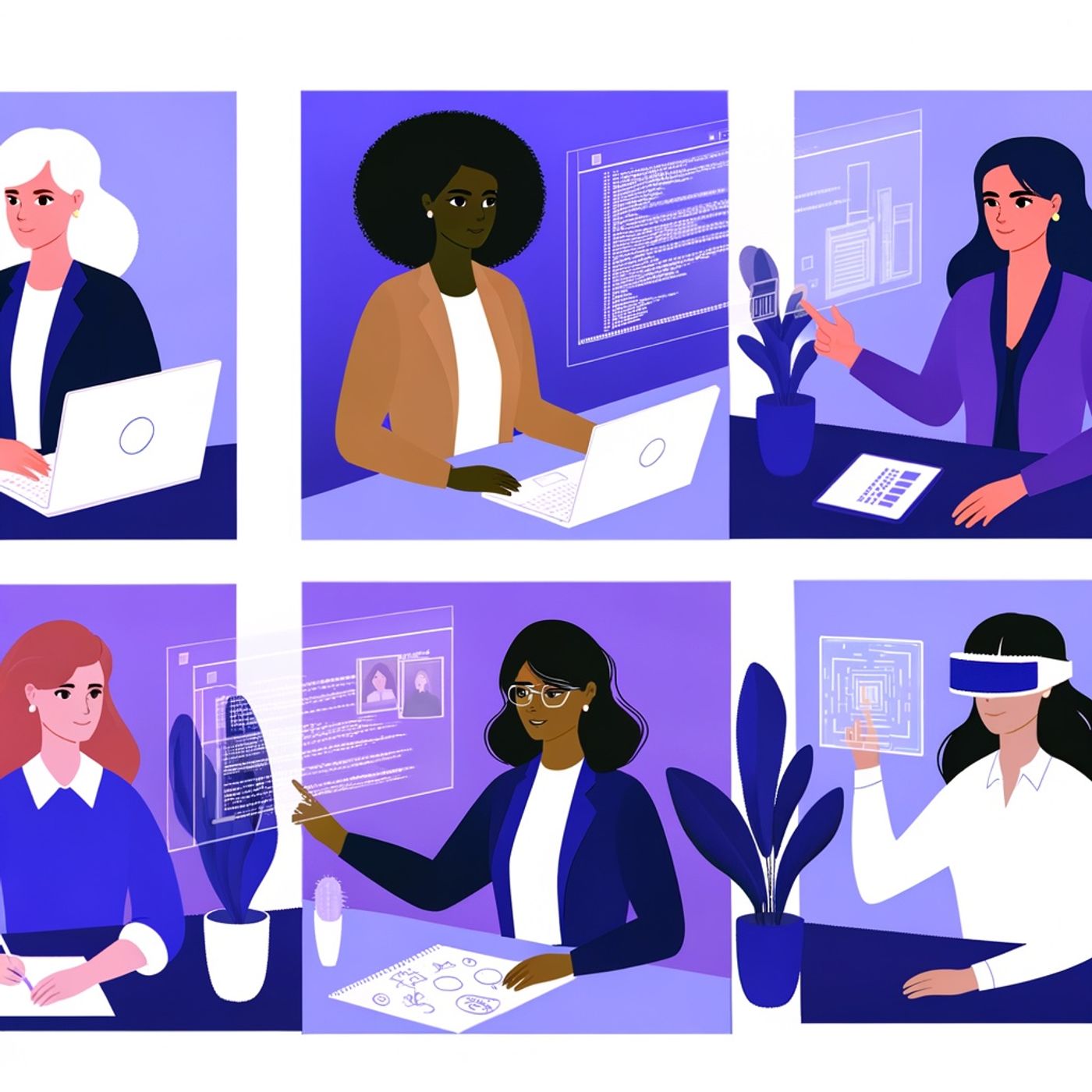Podcast Episode Details
Back to Podcast Episodes
Tech's Tipping Point: Women Rewriting the Code
This is your Women in Business podcast.
Welcome to Women in Business. Today, we’re diving straight into the complex landscape women face in the tech sector – because for all the innovation this industry delivers, it continues to present unique challenges and opportunities for women pursuing impactful careers. Just under one-third of roles in tech are currently held by women, according to CompTIA’s latest report, and while progress is happening, there’s still a long road ahead.
Let’s start by discussing representation. In the United States, women make up about 27% of the tech workforce. Contrast that with industries like healthcare or education, where women are close to or even over 50%. The digital sector still lags behind, and the disparity is even more pronounced in specialized roles like software development, where only one in five developers identifies as female. Globally, these numbers remain similar, with just over a quarter of tech jobs held by women, and women’s presence in leadership – say, CEO or CTO roles – is even lower, barely reaching 17% for CEOs and 8% for tech chiefs. These gaps aren’t abstract: they translate into fewer female voices in decision-making and product design, which affects everything from company culture to the tools and platforms shaping our world.
Another key point is career progression. The 2025 Women in Digital Report out of Australia calls out the “Missing Middle” – that stage where many women’s career trajectories stall, not from lack of skill or ambition, but because workplace structures don’t support caregiving or flexible work. Globally, nearly half of women who start in tech leave by age 35, often citing lack of career mobility and unsupportive workplace climates. For mid-career women, this is a critical intersection – and business leaders need to rethink advancement pathways to keep talented women moving up, not out.
That brings us to the impact of new technologies. The rise of artificial intelligence, automation, and remote work means that upskilling is more essential than ever. According to Skillsoft’s most recent findings, learning about AI is seen as a key lever for closing the gender gap. Women who use AI at work overwhelmingly report increased productivity, and the companies that prioritize diversity in their tech teams are better positioned to innovate and thrive as these tools become ubiquitous.
Let’s also talk about the pay and power dynamic. The median annual wage for tech jobs in the US is more than double the national average, but pay inequity hasn’t disappeared: tech companies offer men higher salaries than women for 62% of jobs, and women who lead startups can expect to earn less than their male counterparts. While the pay gap in areas like computer science is narrowing – women earn around 94% of what men do – it’s clear that equity still has a long way to go.
Finally, let’s talk about the mosaic of support and self-advocacy. Nearly 80% of women in tech feel they must work harder than their male counterparts to prove themselves. Burnout rates are high, and experiences of isolation or bias are real concerns. But there’s also resilience, collaboration, and innovation. Women are forging powerful networks, mentoring the next generation, and driving change from both grassroots and boardrooms.
Before we wrap up, here are five discussion points for today’s episode:
Navigating the mid-career “Missing Middle” and how to create better advancement pathways.
Leveraging AI and emerging tech to level the playing field.
Addressing pay equity and salary negotiation for women in tech.
Redesigning workplace flexibility to support both career growth and caregiving responsibilities.
Building authentic networks and mentorship pipelines to foster inclusion and resilience.
Thank you for joining me for this important conversation on Women in Business. Be sure to subscribe for mor
Published on 2 months, 1 week ago